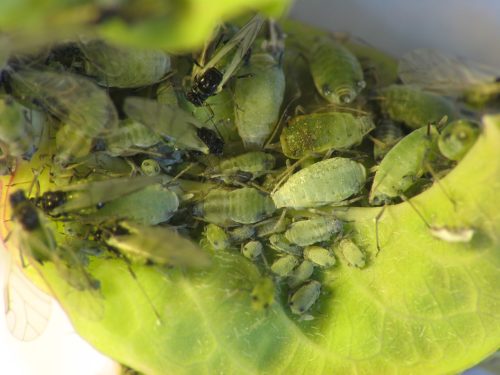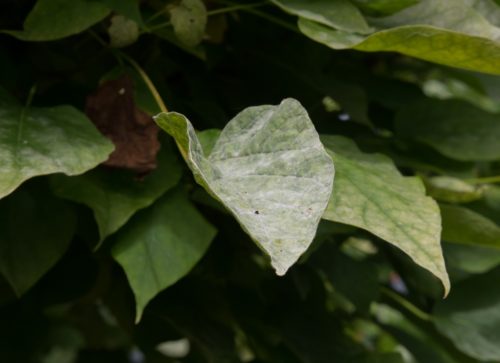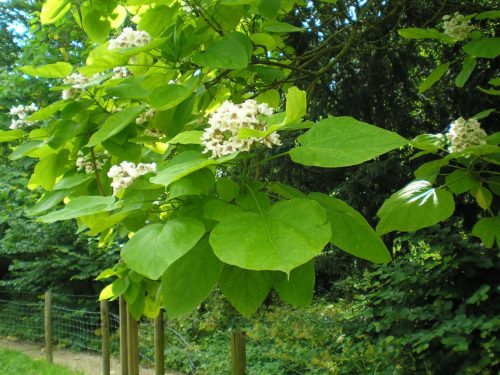Catalpa, small trees belonging to the trumpetvines family.
Also known as:
Catawba
You are viewing the mobile-adapted version of the page.
The one for tablets, laptop and desktop also provides general information, such as origin, toxicity and cultivation.
Catalpa, small trees belonging to the trumpetvines family (Bignoniaceae). Catalpas are native to North America and eastern Asia.
The Catalpa has no particular soil requirements, but prefers light soils with loam. Catalpas are somewhat frost-prone: the wood can freeze during frost in strong easterly winds.
Plant Catalpas in a place out of the wind: the branches break off easily during storms.
Bugs

There are aphids on the undersides and tops of leaves and petioles; leaves curl: including the Catalpa aphid (Aphis catalpae).
Fungi & diseases

Grey fungus on the (young) leaves: Powdery mildew (Ascomycete strain).
The leaves wilt, yellow and die. Then the branches follow; eventually the tree dies: Verticillium wilt (Verticillium spp).
Other
During hot summer weather (temperatures above 30ºC), leaves left in full sun dry out: drought or sunburn.

